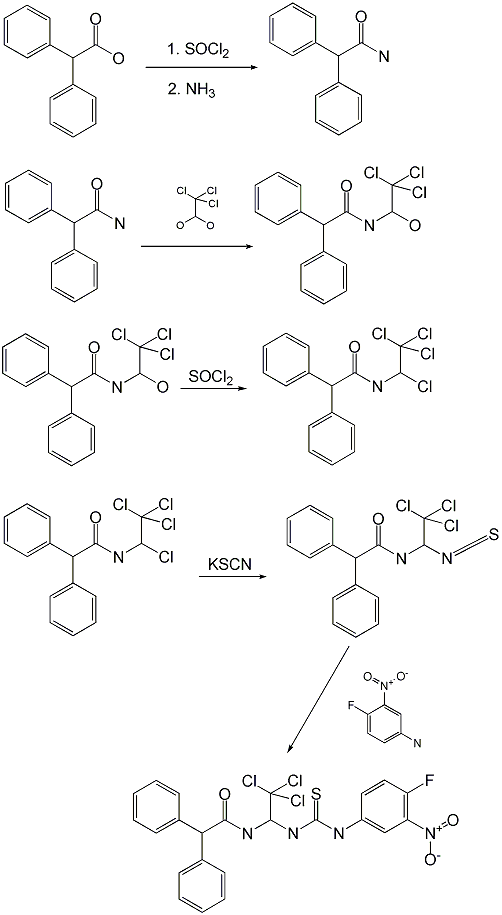CGK733 was discovered by screening a library of 20,000 synthetic molecules for their effects on aging cells. Tae Kook Kim and colleagues at Korea’s Advanced Institute of Science & Technology report that CGK733 can extend the lifetime of cultured cells by approximately 20 divisions, or roughly 25%.
Chemical IUPAC Name: 2,2-Di(phenyl)-N-[2,2,2-trichloro-1-[(4-fluoro-3-nitrophenyl)carbamothioylamino]ethyl]acetamide
Synonyms: CGK733, CGK 733
Chemical Formula: C23H18Cl3FN4O3S
Molecular Weight: 555.85 g/mol
CAS Registry Number: 905973-89-9
Canonical SMILES: C1=CC=C(C=C1)C(C2=CC=CC=C2)C(=O)NC(C(Cl)(Cl)Cl)NC(=S)NC3=CC(=C(C=C3)F)[N+](=O)[O-]
InChIKey Identifier: HLCDNLNLQNYZTK-WRPLANPYCS
CGK733 has the following structural formula:

CGK733 is the first small molecule that can reverse aspects of cell senescence. Genetic techniques have been used to do so in the past. But what makes CGK733 unique is that its antiaging properties are reversible: When CGK733 is removed, cells return to normal aging and death.
This feature makes CGK733 more of a dimmer switch than an on/off switch and gives the molecule potential as a drug lead, Kim says. “Knocking out a protein’s function entirely can lead to terrible side effects. The dimmer switch characteristic provides a window for dosage.”
The synthesis of CGK733:

References: http://pubs.acs.org/cen/news/84/i25/8425notw4.html
StumbleUpon | Digg | Del.icio.us | Newsvine | Spurl | Reddit




